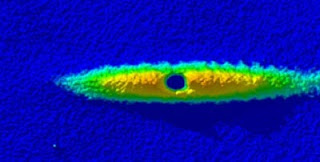 |
| The dimple trap in action - PW |
The first Bose–Einstein condensate (BEC) to be cooled using just lasers has been made by a team in Austria. The process is much simpler, faster and more efficient than previous methods, which involve an extra stage of evaporative cooling. The scientists hope that their breakthrough will lead to more widespread use of BECs in various areas of physics, including atomic clocks and atom lasers.
A BEC is a dense cluster of atoms cooled so close to absolute zero that all of the atoms are in a single quantum state and can therefore be described by the same wavefunction. The first pure BEC was made in 1995 by Eric Cornell and Carl Wieman at JILA in Boulder, Colorado. Since then, BECs have been used – or proposed for use – to create atom circuits, rotation sensors, atom lasers and other novel devices.
Making a BEC traditionally involves the two-step cooling of a cloud of atoms contained in a magnetic trap. The first step is laser cooling. It involves choosing an electronic transition of the atom to be cooled and irradiating the atom cloud with laser light of an energy slightly below this transition. For the most energetic atoms trying to climb out of the trap, the laser light is blue-shifted to the transition frequency. These atoms can therefore absorb a photon, which pushes them back. It also promotes the atoms into the excited state. When the atom decays back to the ground state, it emits a photon of a higher energy than the one it absorbed. The overall effect is that the gas cools and becomes denser.
Physics World: Laser-cooled Bose-Einstein condensate is a first
Comments